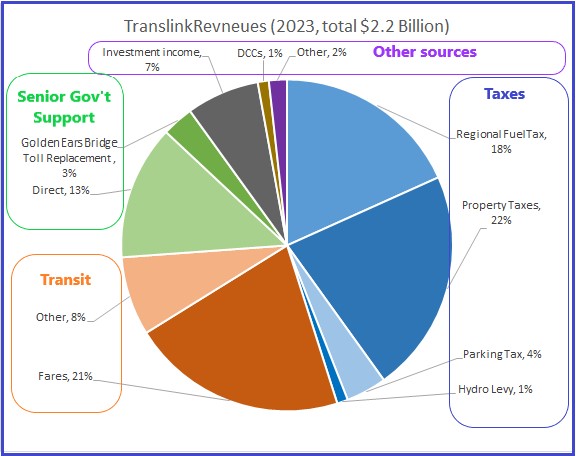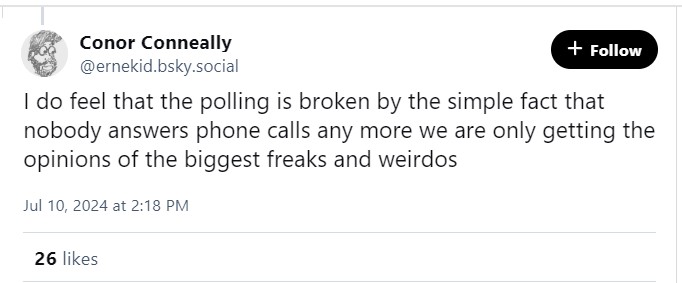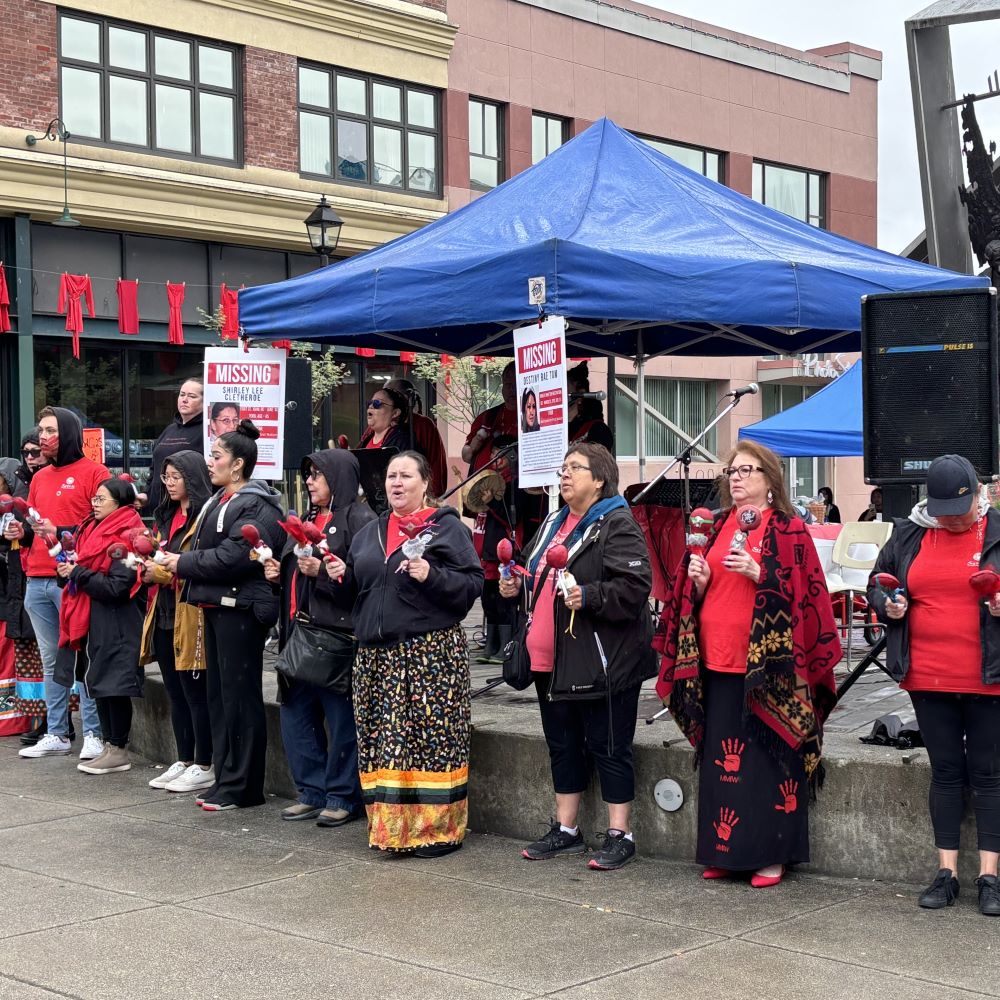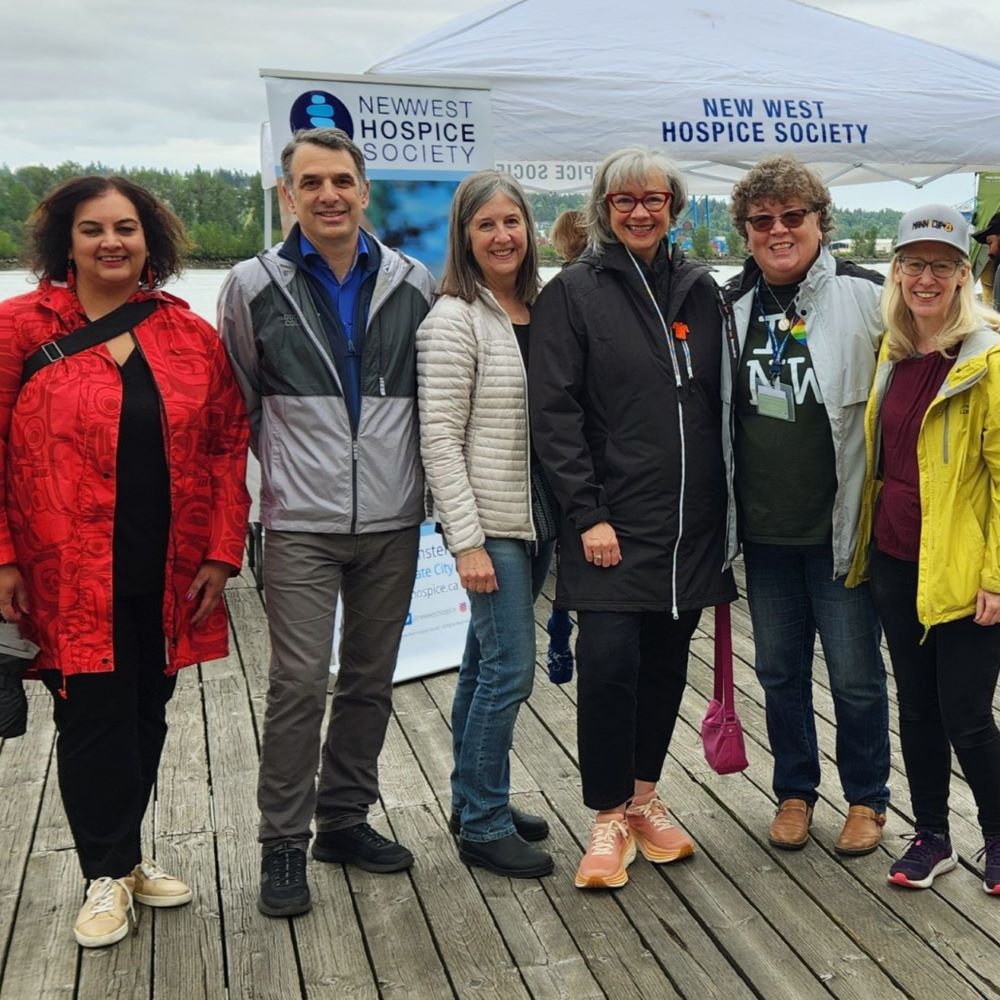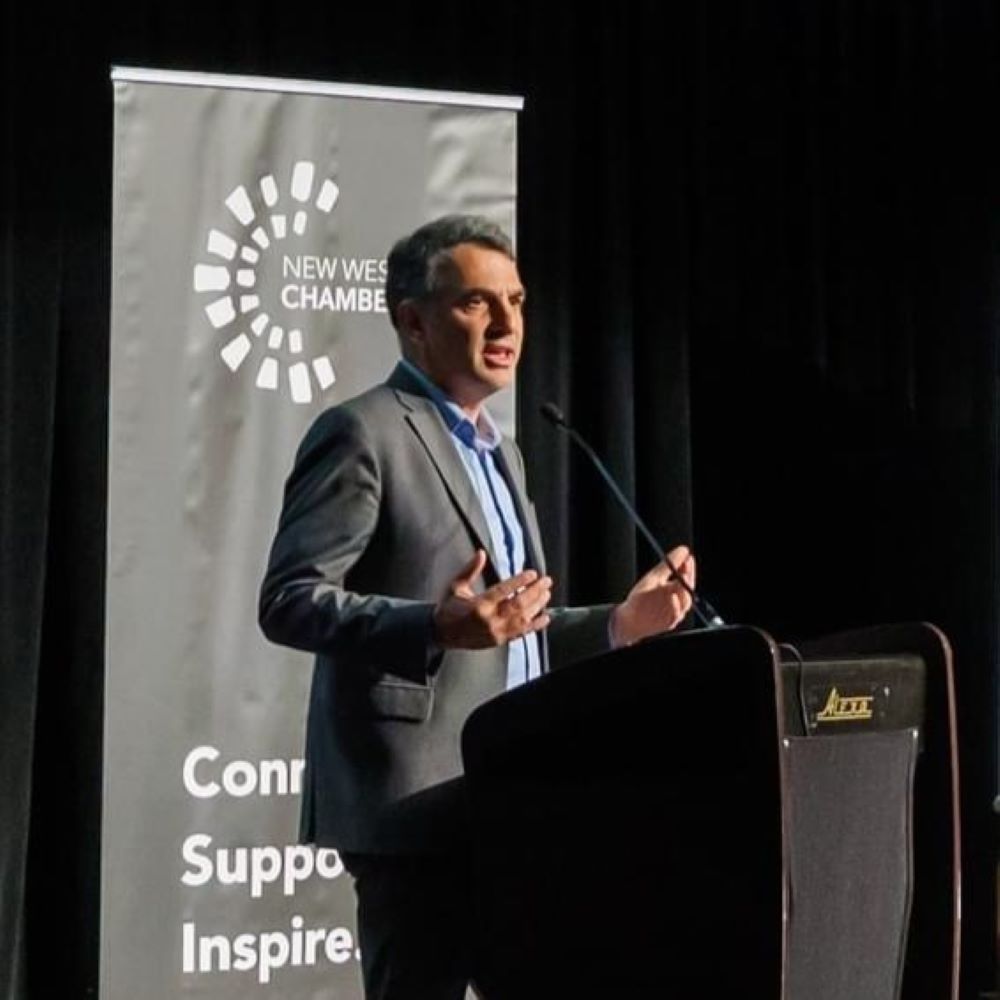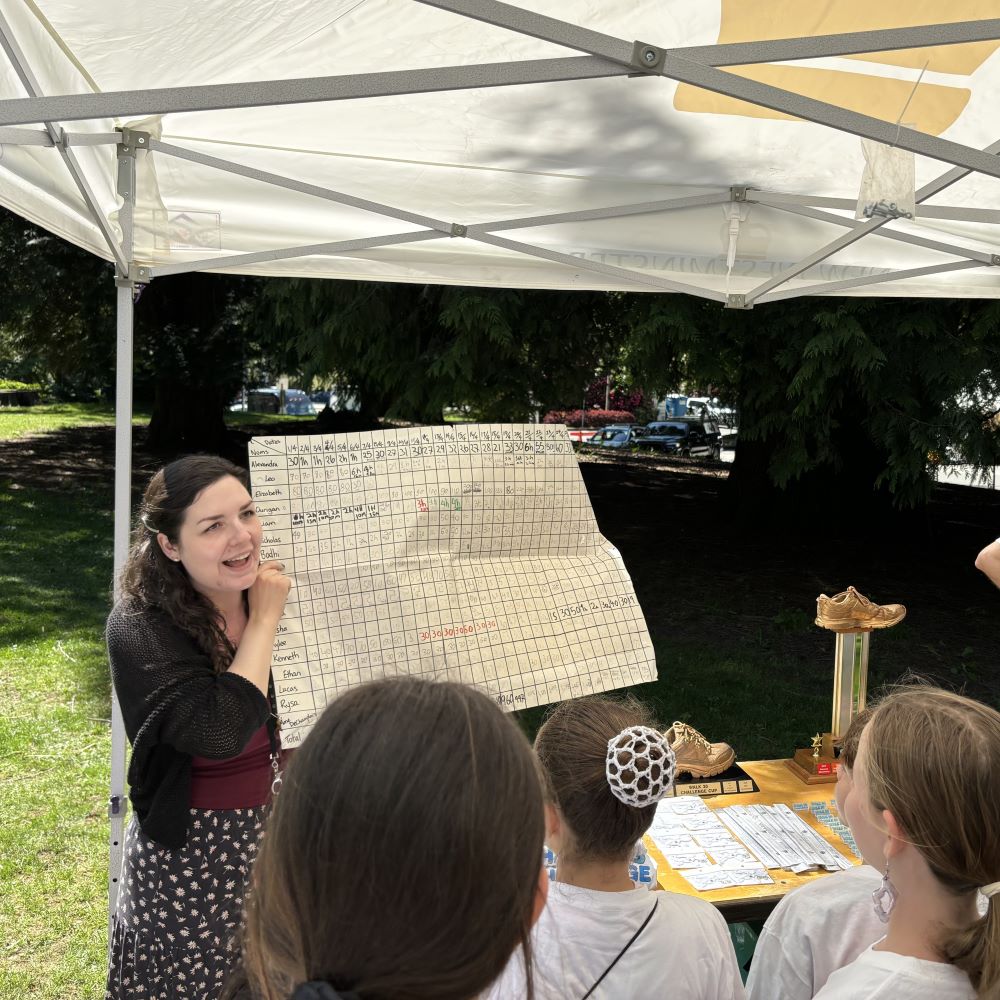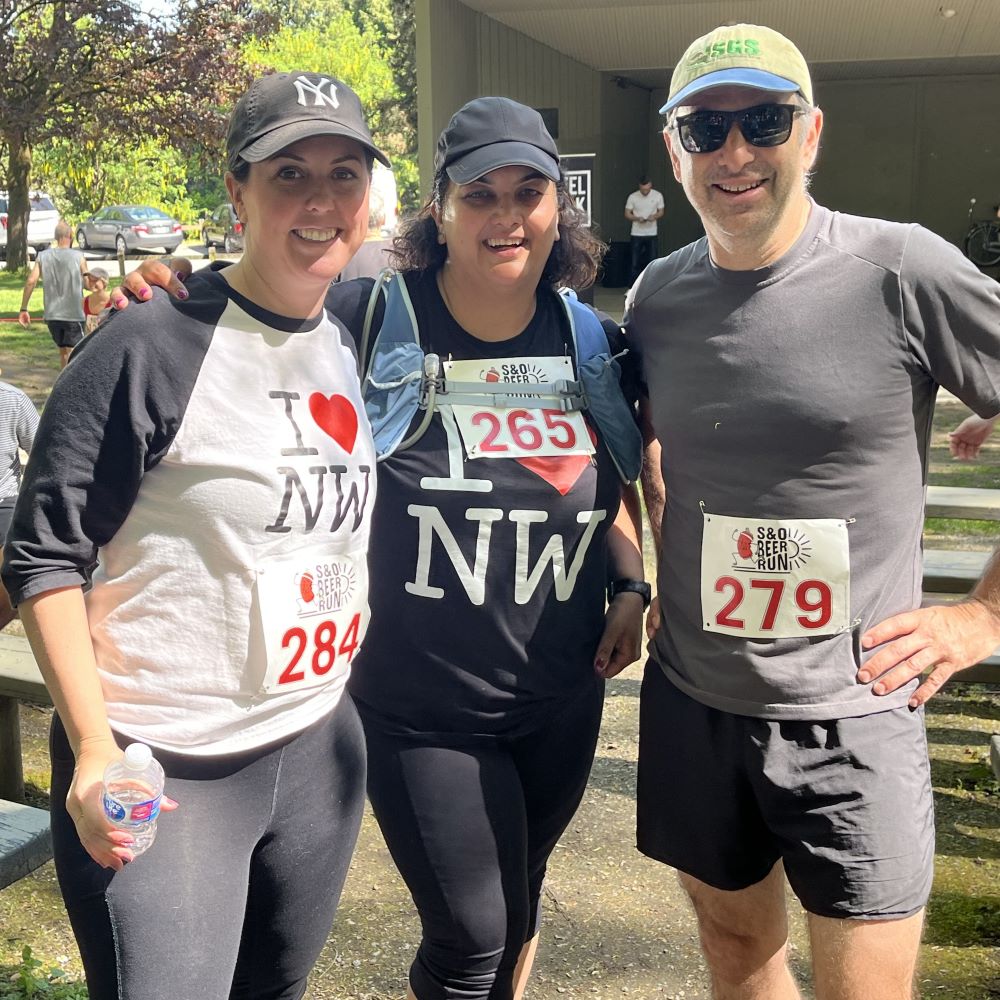Our Monday Council meeting was another long one with a fairly short agenda, but aside from a full list of public delegates, there were also quite a few speeches that needed to be made, so there we are. We started with a Development Variance Permit for consideration:
Development Variance Permit No. DVP00697 for 114-118 Sprice Street
The owner of these properties in Queensborough is rezoning to build 10 compact lot detached homes. Nothing unusual here, in fact when it came to Council for a comprehensive review almost a year ago, Council approved it on Consent without comment. The Bylaw also saw three readings by Council and adoption this year, all without comment. So I was a little surprised when this DVP (required only because the lot dimensions are such that that the frontage is less than 10% of the total lot circumference, which the Local Government Act says staff can’t approve without a Development Variance Permit) resulted in numerous questions from a single member of Council that were more related to the previous-approved rezoning than the DVP, but here we are. Nonetheless, Council approved the DVP.
We then had the following items Removed form Consent for discussion:
Building Safer Communities Fund Program Update February 2023 to March 2024
The City received BSCF funding (up to $1.7 million) from the federal government to implement a plan to address youth being at risk for gang involvement of violent crime. The working group established by the City to implement the plan, and incredible partnerships in our community – NWPD, the Lower Mainland Purpose Society, Dan’s Legacy, the School District and many others. Between the Situation Table model that is aligning agencies to address very specific and emergent needs to the Youth Hub at Purpose, we are building resiliency in our community here. This report is long, because there is a lot happening. I’m really proud of our community for doing this work, but it was effectively just an update for our consideration, not an action item for Council.
Development Variance Permit for Works & Services Security – 602 Agnes Street (68 Sixth Street) Affordable Housing Project – Notice of Consideration of Issuance
68 sixth street is moving forward, now addressed as 602 Agnes. This is a bit of government sausage-making, but the short version is we need a services agreement to connect any new building to City services (electrical, water, sewer) and usually collect a Letter of Credit to secure any unexpected costs the City may suffer from this connection. With a regular developer that is an important piece of security in case the development goes insolvent so the city (taxpayers) doesn’t get caught holding the bag. With BC Housing, we are pretty sure they are not going to go bankrupt, so we are asking for a letter of indemnity (a promise to pay, effectively) instead of freezing up their capital. This needs Council approval, which we are doing, because we want affordable housing built.
We then address several Motions from Council:
Tenant Protections
Submitted by Councillor Campbell and Councillor Nakagawa
WHEREAS new provincial legislation is creating a path for increased development density around transit areas which will impact many more affordable New Westminster neighbourhoods due to our abundant transit services; and
WHEREAS Bill 16 (Housing Statutes Amendment Act) allows municipalities to enact tenant protection bylaws related to redevelopment, including within transit-oriented areas; and
WHEREAS tenants—especially those in older and more affordable rental housing— may be disproportionately impacted due to this new development; and
WHEREAS New Westminster has previously shown leadership in protecting vulnerable renters with strong actions to curtail demoviction and renoviction; and
WHEREAS the regional housing market is reaching new levels of crisis, increasing the risk that existing tenants will lose access to adequate housing through displacement related to redevelopment;
THEREFORE BE IT RESOLVED THAT the City of New Westminster update our tenant protection and relocation policies, using Burnaby’s as a model to provide support for tenants who may be displaced from their homes, including by redevelopment.
We had several people, including folks from the New West Tenants union delegate to Council about this issue, all in support of the motion. There is significant concern that the unanticipated impacts of the new Transit Oriented Development regulations from the province may impact our ability to enforce demoviction protections in the same way we have previously at the same time as it puts increased pressure on redevelopment near transit centers. Time for a review. This was also timely as Tasha and I had returned from FCM, where we both saw protesters calling for basic rental protections for Alberta (where there is almost none) and met with Councillors from Ontario that were using New Westminster anti-rennoviction bylaws as a model for their own similar regulatory approach to protecting the most affordable homes in their community. The contrast was shocking and reminded me of what side of this fight I want New Westminster Council to be on. Council voted to support this motion.
Making the Annual State of the City Address More Inclusive to Our Youth
Submitted by Councillor Fontaine
Whereas a recent series of State of the City addresses by the current and past Mayor have taken place at a private venue that restricts entry only to those 19 years and older; and
Whereas the most recent State of the City address held on May 7th, 2024 was a ticketed event which also required people show government issued identification to enter the premises; and
Whereas the City of New Westminster is committed to supporting our youth and embracing inclusivity; and Whereas other Mayors within our region ensure their State of the City address is held in an open, no-cost, low-barrier venue such as at City Hall;
BE IT RESOLVED THAT Council prohibit the Mayor from hosting future State of the City events that are not fully accessible to all members of the public free of charge.
I cringe whenever we use possessives to describe a group of people, but we don’t debate the titles of these motions.
This motion seemed to be based on a strange idea about what the State of the City is, as an event. The word “official” kept getting applied to it by the mover for unknown reasons. There is nothing “official” about it. It isn’t in the Local Government Act or any other legislation in the City. This is not the Annual Report of the City (which is “official”, prepared by staff and delivered by the CAO of the City in Council Chambers).
Instead, the State of the City in New Westminster (like in almost every other City in BC where such a thing takes place, including Surrey, Vancouver, Delta, White Rock, Langley, North Vancouver, Burnaby, etc…) is a partnership with the Chamber of Commerce in the form of a ticketed business luncheon sponsored by valued local businesses. I think the participation by the Mayor in a Board of Trade or Chamber event of this nature is a win-win.
There are many events that I am asked to take part in where I talk to select groups of the community about the City. That’s one of the roles of Mayor. Last week I gave a (shortened and looser) version of the STOC to seniors at a registration-required event at təməsew̓txʷ, I have also met recently with several elementary and middle school classes to talk about local government and the City. Net month, I will be talking to the (Members only!) Rotary Club and next week providing a Keynote to the (registration required!) Active Transportation Summit. None of these were open and accessible to all for a variety of reasons, but are facilitated to address a specific group. I don’t think there is anything wrong with the Mayor taking part in these types of events, and I can only speculate why some members of Council want to limit my ability to talk to different groups of the public.
Anyway, Council defeated this motion. And for those curious, the State of the City is recorded and streamed on the City’s website, anyone can watch it any time they want, which I think is a nice benefit for every one of the Chamber providing their partnership for this event.
Undertaking a review of the City’s outdoor events policies, procedures and permit fees
Submitted by Councillor Minhas
Whereas the process, procedures and policies linked to the establishment of outdoor events in New Westminster has been described at complex, costly and a challenge to overcome; and
Whereas there is a desire on the part of the City to encourage more outdoor events on a regular basis throughout the year; and
Whereas it is good practice to regularly seek feedback from the community regarding whether there are opportunities to streamline our processes in order to reduce red tape;
BE IT RESOLVED THAT Council establish a citizen-based taskforce to review our policies, procedures and permit fees regarding how they may be impeding the development of new and/or putting into jeopardy existing outdoor events; and
BE IT FURTHER RESOLVED THAT the taskforce make recommendations to Council regarding how we can streamline our processes and reduce red tape to help facilitate more outdoor events on a regular basis.
This resolution seemed to be a solution looking for a problem. Rather like some recent discussions about businesses abandoning New Westminster while our business license count shows we are growing new businesses faster than ever, this motion seems to be about a nostalgia for events that no-one in the community was interested in running (Show and Shine) without recognizing that we have organizations running literally dozens of events in the City, from well-established events with long history like the Hyack Parade and Nagar Kirtan, to the new traditions of Uptown Live, Pride Week, and Recovery Day, to emergent new events like On Your Block, National Indigenous Peoples Day, and Blocktober Fest. The best part is to see the recovery after COVID and how people in the community show up for these events.
It seems the mover didn’t speak to the organizers of these events putting this together, or otherwise did not recall the work the City is doing in this space, endorsed by Council in February. The mover is a member of the Arts, Culture and Economic Development Advisory Committee, where much of this work is being coordinated (as Festivals are the perfect interaction od Arts, Culture, and Economic Development), and would have benefited from getting caught up on what’s happening at that committee.
Staff have created a FEST team to coordinate though a one-stop-shop the fire, police, engineering, traffic and Fraser Health requirements that are often the biggest logistical step for festivals. There are other concerns related to policing and safety costs, which is where the City’s current work on updating our Grants process has a role. We are also building back our volunteer coordination resources after COVID, as volunteer support is one of the areas where many festival organizers are feeling pinched. I don’t want us to take people off of those work areas to coordinate another task force. It seems that adds to instead of reducing complication and bureaucracy.
Council did not support this motion.
Requesting that Metro Vancouver conduct an independent review of the North Shore Wastewater Treatment Plan cost overruns
Submitted by Councillor Fontaine
Whereas Metro Vancouver’s North Shore Wastewater Treatment Plant project is now estimated to cost nearly $4 billion dollars, a massive cost overrun compared to the original $500 million dollar budget; and
Whereas the specific circumstances that led to one of the largest cost overruns of any public infrastructure project (on a percentage basis) are still mainly unknown; and
Whereby given Metro Vancouver is about to undertake several other mega projects that will cost Metro Vancouver taxpayers billions of dollars;
BE IT RESOLVED THAT Mayor Patrick Johnstone, as our representative on Metro Vancouver, be asked to submit a motion to that governing body calling for a full, independent public inquiry into the North Shore Wastewater Treatment Plant cost overruns.
This motion may have benefitted from the mover talking to their colleagues on Council or on the Metro Vancouver Board instead of spending all their time talking into various TV cameras. And the conversation about it in Council was equally frustrating, because it never seemed to get through that the motion (if approved) was not going to deliver what the mover seemed to insist would be the result. On that failure to understand the situation, I prefer to invoke Hanlon’s Razor.
Like the mover, I also have significant questions about how the North Shore Wastewater Treatment Plan was approved at just over $700 million, and the conditions that led to the firing of the main contractor in 2021 – events that presaged the current budget on the order of $3.8 Billion – because I was not on the Board when those events occurred. But I do know (and it has been widely reported) that we are currently in the middle of a legal fight with that contractor – suit and countersuits that will no doubt preclude any full public disclosure of the conditions that led to those lawsuits until people get their day in court, because that is how legal processes work. One would expect Metro Vancouver, having several hundred million public dollars at stake in those legal proceedings, do not want to do anything that might jeopardize them. So, calls for a public inquiry at this time will not be heard by anyone in a position of responsible governance.
I know that isn’t a satisfying answer to anyone, it isn’t a satisfying answer to me. But that is where we are, and when I serve on the Board of Metro Vancouver, I have a legal duty of fidelity to that organization, and cannot ask for things that would threaten that.
What I can say is that this situation is not representative of how Metro Vancouver delivers large infrastructure projects. Metro is commonly delivering numerous large and complex infrastructure projects in the hundreds-of-millions scale, from water treatment to major region-spanning pipelines, and has a strong record of delivering on time and on budget. The Metro board has also committed to internal review and addressing concerns that led here so they don’t end up in the same boat on future major capital projects. There is no reason to believe that this is a new normal, or a situation that will be repeated in future capital investments.
In the end, Council did not support this motion, as it would not deliver what the mover wanted to insist it would deliver. However, this is not the last we will be talking about this project.
Supporting families, people with mobility challenges and/or a disability to access New Westminster’s waterfront
Submitted by Councillor Minhas
Whereas access to our City’s waterfront should be something accessible to all residents, regardless if they have mobility challenges or not; and
Whereas there are several City owned-operated elevators that connect our downtown to the waterfront which have been out of service for periods of several months at a time; and
Whereas a lack of elevator access can prove challenging for people with mobility difficulties to access our waterfront
BE IT RESOLVED THAT staff report back to Council regarding the status of our City owned-operated elevators (connecting our downtown to the waterfront) over the past year including how many days they have been out of service; and
BE IT FURTHER RESOLVED THAT staff report back with an action plan to ensure that at least one City owned elevator always remains operable to ensure a minimum level of access to our waterfront.
This is an email, not a resolution. In fact, this comes on the heels of an email provided to Council on the status of the McInnes elevator (repaired and still under warranty). We don’t need an “Action Plan” developed on elevator maintenance for two elevators, this is an operational item that is not something Council needs to meddle in. We are a policy body, not managers. Our goal as a City is to maintain assets in a way that best applies our limited resources, and our goal is to have all of the elevators operational at all times. Recognizing that, maintenance of elevators is complex and outdoor elevators do occasionally break down, and as anyone who lives in a high-rise knows, when things go wrong, there is sometimes a wait for parts and people who can fix them. I have confidence that staff take this work seriously, and are doing all they can to be responsive to maintenance challenges.
That saying, we also recognize that broken elevators are problematic for access, and this is why we made the decision to not rely on an elevator for the west Pier Park access built for the City by Bosa, but invested instead in the bigger, more expensive, and maximally accessible ramp. It is also why we put so much emphasis on assuring the new access across the tracks at Begbie will be fully accessible.
This resolution was amended to change from a report to an email (saving staff time and energy) and asked that other issues regarding accessibility to the waterfront be referred to the Accessibility Committee. The Amended motion was approved by Council.
And to wrap we had one piece of New Business:
EComm AGM representative
New Westminster is member of the EComm “syndicate” and we need to assign a member to attend the AGM and vote on our behalf. Council appointed Councillor Fontaine to be this representative.
